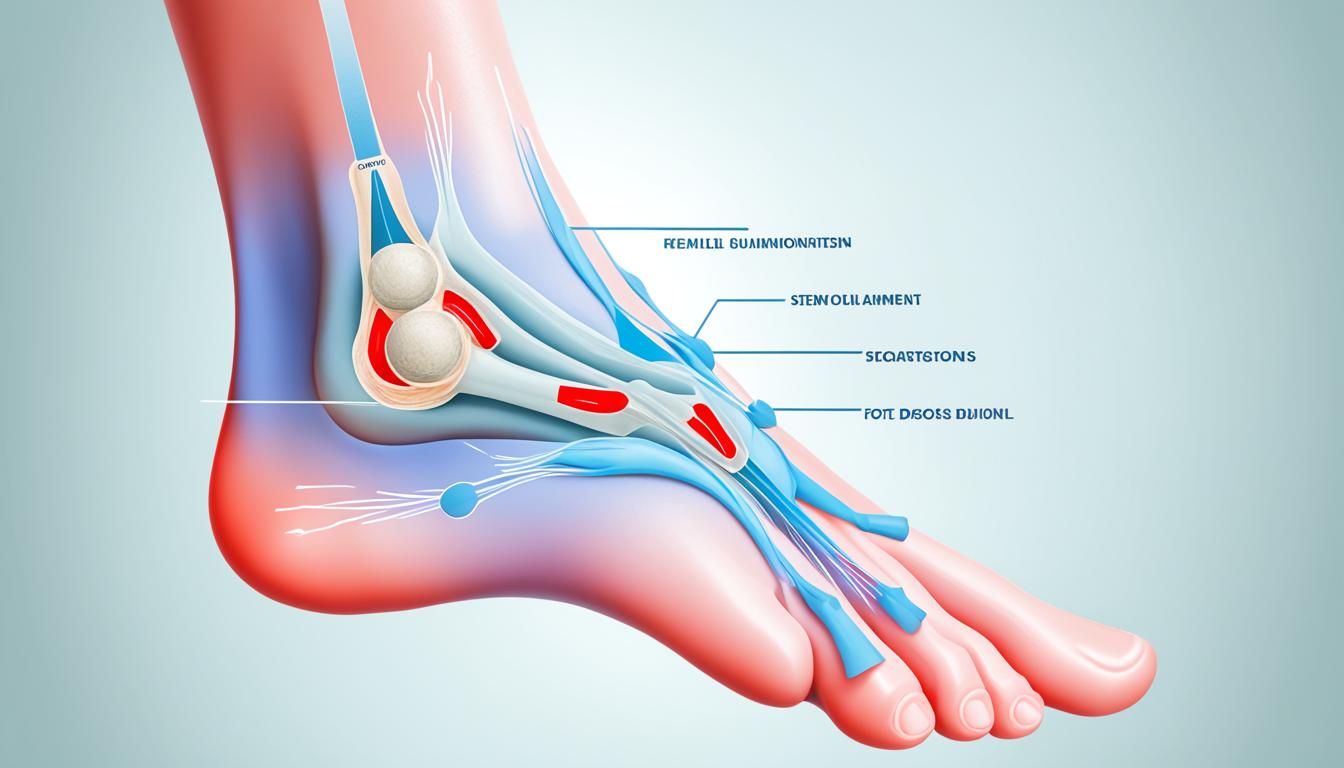Bunions, or hallux valgus, are bony bumps at the bottom of the big toe. They lead to pain, swelling, and trouble finding comfortable shoes. Genetic factors, foot shape, and wearing badly fitting shoes or foot injuries are major causes. Certain health conditions may also play a role in their development.
Treatment for bunions starts with simple methods. This includes picking shoes that fit well, using special shoe inserts, and sometimes special padding or taping for comfort. Doctors might also suggest pain medicines for relief. If these don’t work, surgery could be an option.
Bunion surgery fixes the joint of the toe, removes the bump, and corrects any toe deformities. It’s a last resort after trying other treatments. Always talk to a specialist to find the best plan for your case.
To diagnose bunions, a doctor examines your foot and its flexibility. They might also take X-rays to see the bunion clearly and check for any other issues.
Located in Jupiter, Florida, the Abacoa Podiatry & Leg Vein Center is a top place for bunion care. They provide tailored treatments, including the latest in non-surgical options like stem cell therapy. This therapy helps heal and rebuild the affected area.
Key Takeaways:
- Bunions are bony protrusions at the base of the big toe that can cause pain and discomfort.
- Treatment options include conservative measures like wearing proper footwear, using orthotic devices, and taking medications for pain relief.
- In severe cases, bunion surgery may be necessary to realign the toe joint and correct deformities.
- Abacoa Podiatry & Leg Vein Center offers specialized bunion treatment and innovative options like stem cell therapy.
- Consulting with a specialist is essential for accurate diagnosis and personalized treatment plans.
Non-Surgical Options for Treating Bunions
Surgery isn’t always the first choice for bunions. There are non-surgical treatments that can ease pain and discomfort. These methods focus on relief and improvement without surgery.
Footwear Advice
Choosing the right shoes is key to managing bunions without surgery. Wear shoes with a wide toe box. They give toes more room and reduce pressure. Avoid high heels and tight shoes. They can make bunions worse. A podiatrist can give advice customized to your needs.
Foot Orthoses
Orthotics are custom-made shoe inserts that support the feet. They help align the foot properly and ease bunion pain. These inserts fit inside shoes. They spread pressure away from the bunion, lessening pain.
Night Splints
Night splints are worn in bed. They gently stretch the foot’s soft tissues to improve alignment. Using them regularly can slow bunion growth and relieve symptoms.
Physical Therapies
Physical therapies are helpful without surgery. They include manual therapy, taping, and special exercises. Manual therapy and taping can ease pain by improving joint movement and providing support. Exercises strengthen foot muscles and support overall foot function.
New treatments like PRP injections and stem cell therapy offer hope for bunion care. PRP uses patients’ own blood platelets to heal and regenerate tissue. Stem cell therapy introduces stem cells to the joint for healing. While these treatments are promising, more studies are needed for their direct effect on bunions.
It’s wise to see a foot specialist for bunion treatment. They can offer the best plan for you. By considering non-surgical treatments, you can reduce bunion pain and improve foot health without surgery.
Minimally Invasive Surgery and Bunion Shaving
Minimally invasive surgery can help with very bad bunions that won’t get better with other treatments. It uses smaller cuts, which means less harm to your foot and quicker healing. This third-gen technique, minimally invasive chevron and Akin osteotomies (MICA), has greatly improved how well patients do after surgery.
This kind of surgery fixes the toe joint’s alignment, takes out swollen tissue, and corrects other issues. It tackles the real problem causing the bunion, making the solution longer-lasting than just shaving off the bump. Shaving the bunion only eases the pain for a while but doesn’t stop the issue at its source.
Which surgery to choose depends on how bad the bunion is. A bunion expert must look closely to pick the right way to fix it for you. But, avoiding surgery in teens is common advice since their feet are still growing and the bunion might come back later.

